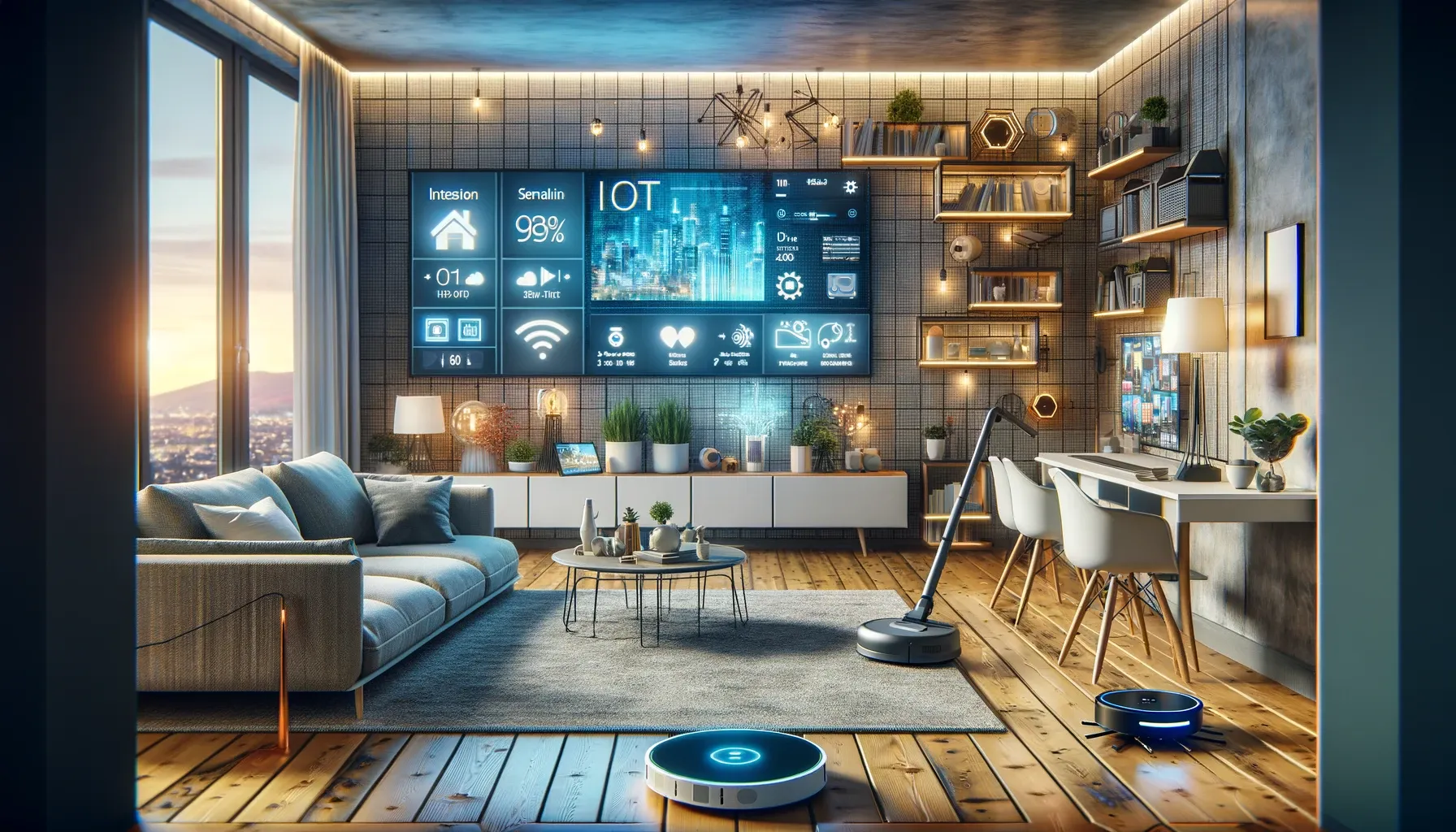Introduction
Over the last decade, we have seen a marked transformation in the way we produce and consume energy. One of the protagonists of this energy revolution has been solar energy. In many places around the world, solar panels have appeared on rooftops, fields and even small residential installations, reflecting the growing appreciation and embrace of this form of clean energy. But what drives this growing trend to turn to the sun? The answer lies in the economic and environmental benefits that solar energy provides.
Economically, solar energy provides an opportunity for homeowners to significantly reduce their electricity bills. With the advancement of technologies and the reduction in installation costs, it has become more affordable than ever to invest in solar panels. In the long term, this investment can result in substantial savings as dependence on traditional energy sources decreases.
From an environmental point of view, solar energy is invaluable. Unlike fossil fuels, it does not emit greenhouse gases, the main causes of climate change. By opting for solar energy, we are not only protecting our pockets, but also contributing to the preservation of the planet.
In this article, we'll explore more deeply how you can save money with solar energy in your home and why it's a smart choice for both your budget and the environment.
Understanding Solar Energy
Solar energy, in essence, is energy that is derived directly from the Sun and converted into electricity or used for heating. This inexhaustible and renewable resource has the capacity to provide energy for countless applications, from the simplest to the most complex. But how exactly do we harness this abundant power and turn it into something we can use in our homes?
How is solar energy generated?
Solar energy is captured through photovoltaic cells, which are found in solar panels. These cells are predominantly made of silicon, and when sunlight hits these cells, it causes electrons to move in the material, thus creating an electrical current. This process is known as the photovoltaic effect. The electricity produced in this way is, however, in direct current (DC) form, which is not directly usable in many residential devices.
Main components of a residential solar energy system:
- Solar panels: These are the most visible energy harvesters in a solar system. They contain photovoltaic cells that convert sunlight into electricity. The panels are typically installed on roofs, but can also be ground-mounted or integrated into building facades.
- Inverters: Since solar panels produce direct current (DC) electricity, and most of our household appliances require alternating current (AC), an inverter is necessary. An inverter is a device that converts DC to AC, making it usable in your home.
- Batteries: While solar panels and inverters are essential for any solar installation, batteries are not always necessary but are highly beneficial. They store excess energy produced during the day to be used at night or on cloudy days, ensuring that the home has energy even when the sun is not shining.
Understanding the basic components and operation of a solar energy system is the first step to appreciating its potential. With this knowledge in hand, you are better prepared to make informed decisions about incorporating this renewable form of energy into your home.
The Economic Benefits of Solar Energy
When talking about solar energy, the first thing that may come to many people's minds is its positive contribution to the environment. However, adopting this technology is not only an ecological decision but also a financially astute choice. Here, we explore the economic benefits of solar energy for homeowners.
- Reduction in monthly electricity bills: One of the immediate and most tangible benefits of solar energy is the drastic reduction in electricity bills. Once solar panels start producing electricity, dependence on the electrical grid decreases. In some cases, during sunny days, your system can generate more electricity than your home consumes, even making it possible to sell the excess back to the grid.
- Property appreciation when installing solar panels: With growing awareness about sustainability and the search for economical energy solutions, homes equipped with solar energy systems tend to have a higher market value. Several studies have shown that properties with solar installations sell faster and for higher prices compared to homes without these systems.
- Tax incentives and government subsidies: Many governments around the world have promoted solar energy through tax incentives and subsidies. Depending on where you live, you may be eligible for tax deductions, credits, or even direct subsidies for installing solar panels. These incentives can significantly reduce the initial installation cost, making solar energy even more attractive from an economic perspective.
- Return on investment (ROI) and payback period: While there is an initial cost associated with installing a solar system, it is crucial to consider this as an investment and not just an expense. The monthly savings on electricity bills, combined with tax incentives and property appreciation, result in a considerable return on investment. Generally, the payback period – that is, the time it takes to recover the initial investment through savings – is just a few years. After this period, you will effectively be generating “profit” through ongoing savings.
In short, solar energy is not only a way to reduce your carbon footprint, but also a smart strategy for saving money. When analyzing the economic benefits, it becomes clear that investing in solar energy is a worthwhile decision in the long term.
Savings beyond the Electricity Bill
When considering the transition to solar energy, most people immediately focus on the direct financial benefits, particularly the reduction in monthly electricity bills. However, the savings provided by solar energy go beyond the numbers on a bill. It manifests itself in broader and more lasting forms, reflecting a global, community and environmental economy.
- Reduced carbon footprint and environmental benefits: Using solar energy drastically reduces carbon emissions. By choosing solar energy, you are directly contributing to reducing your carbon footprint and, consequently, reducing the impacts of climate change. This is an economy that cannot be measured only in monetary terms, but in quality of life, preservation of biodiversity and sustainability for future generations.
- Less dependence on price fluctuations of non-renewable energy sources: Anyone who depends exclusively on non-renewable energy sources, such as oil and gas, is subject to price fluctuations that are often unpredictable. These fluctuations can be the result of geopolitical events, resource shortages, or natural disasters. By investing in solar energy, you protect yourself from these variations, ensuring a stable and predictable energy source.
- Promoting sustainability and energy self-sufficiency: Solar energy promotes a more sustainable and autonomous way of life. Instead of relying on large energy distribution infrastructure and non-renewable sources, homeowners who choose solar have the power to generate their own electricity. This not only reduces vulnerability to power outages, but also promotes a sense of responsibility and connection to the community and surrounding environment.
In short, solar energy doesn't just provide savings on your electricity bill; it also offers a way to actively participate in building a greener and more sustainable future. The transition to this energy source represents a conscious choice to invest in the well-being of the planet and future generations, guaranteeing benefits that go far beyond the financial aspect.
How Does Solar Energy Pricing Work?
When exploring the universe of solar energy, it is essential to understand how pricing works, as this directly affects the savings generated by solar systems. One of the main mechanisms that make solar energy so attractive from a financial point of view is the ability to interact with the electrical grid through the energy compensation system and the sale of surplus. Let's explore each of these points:
Energy Compensation System (Net Metering):
- What is it?: Net metering is a system that allows solar system owners to sell the excess energy they produce back to the electrical grid. This is done through a bidirectional meter that records both the energy consumed from the grid and the energy injected into it.
- How it works?: Imagine that on a sunny day, your solar panels produce more energy than your home consumes. In this case, the surplus is sent back to the electricity grid, “turning” your meter backwards. At times when your home uses more energy than the panels are producing (such as at night), the home uses power from the grid. At the end of the month, you are only charged for the “net energy” consumed, that is, the energy you used from the grid minus the energy you sent back.
Sale of Surplus Energy to the Grid:
- When is it applicable?: In some locations, when your home produces more energy than it consumes in a month or billing cycle, this excess energy may be sold to the electric company.
- Financial benefits: Depending on local rates and regulations, solar system owners may receive credits or even direct payments for the excess energy they supply to the grid. This could result in an even lower electricity bill or even a positive credit.
- Stimulus to production: This system encourages homeowners to maximize the efficiency of their solar systems as any extra energy produced can be monetized.
In short, solar energy pricing is not limited to direct savings on electricity bills. The potential to interact with the electricity grid, whether through net metering or the sale of surplus, offers additional opportunities for savings and even revenue generation. By understanding these mechanisms, you will be better prepared to make the most of your solar energy investment.
Tips for Maximizing Savings with Solar Energy at Home
Solar energy is, without a doubt, one of the most sustainable and economical ways to generate electricity for your home. However, simply installing solar panels is no guarantee of maximum efficiency. Just like any other system, the way you install, maintain, and integrate solar energy with other practices in your home can significantly affect the benefits you get. Here are some tips to ensure you get the most out of your solar installation:
Choosing the Ideal Location for the Panels:
- Steering and tilt: In many regions, solar panels are more efficient when installed facing south, as they capture more sunlight during the day. Furthermore, the tilt angle must be optimized according to your latitude and the sun's path during the seasons.
- Avoid shadows: Make sure the panels are not in the shadow of trees, buildings or other obstacles. Even a small shade can drastically reduce the efficiency of a solar panel.
Regular Maintenance to Ensure Efficiency:
- Cleaning: Dirt, dust and debris can build up on panels, reducing their ability to capture sunlight. Clean them regularly to ensure they operate at peak efficiency.
- Inspection: Check panels and system components such as inverters and cables at least once a year to ensure everything is working properly.
Monitoring and Control of Energy Consumption:
- Use a power monitor: Many solar systems come with monitors that allow you to track how much energy you are generating and consuming. This can help you identify and reduce overconsumption.
- Consumption habits: Try using high-consumption appliances, such as washing machines and dryers, during the day, when your panels are producing the most energy.
Integration with Other Energy Saving Technologies:
- Smart Thermostats: These devices can be programmed to optimize energy use for heating and cooling, supplementing your solar production.
- Led lightning: LED bulbs consume much less energy than traditional incandescent bulbs. By combining LED lighting with solar energy, you can maximize your savings.
- Insulation: Good insulation can help reduce the need for heating or cooling, allowing you to make more use of the electricity generated by solar panels.
By following these tips, you will not only optimize the energy production of your solar system, but also ensure more efficient energy consumption, maximizing savings and promoting a more sustainable life.
Debunking Myths about Solar Energy
As solar energy gains popularity, so do the number of myths and misconceptions surrounding it. Like any new technology, it is critical to separate fact from fiction to make informed decisions. Let's address and demystify some of the most common myths about solar energy:
“Solar energy doesn’t work on cloudy days”:
- Reality: While it is true that solar panels produce more energy on sunny days, they are still capable of generating electricity on cloudy days. Solar radiation still passes through clouds, albeit in smaller quantities. Countries like Germany, which have frequently cloudy climates, are leaders in solar energy, proving that the technology is viable even in less sunny locations.
“Solar panels require a lot of maintenance”:
- Reality: Solar panels are designed to be durable and withstand different weather conditions. In fact, they have few moving parts, which reduces the potential for wear or breakage. Maintenance generally involves occasional cleanings to remove dust and debris and annual inspections to check the system. Compared to other forms of energy generation, solar panels are relatively maintenance-free.
“Investment in solar energy takes a long time to pay off”:
- Reality: The payback period for your solar energy investment (known as payback) varies depending on several factors, including the cost of the system, tax incentives, local electricity rates, and the amount of sun your region receives. With falling solar panel prices and rising electricity rates in many places, the payback period has become increasingly shorter. In many cases, the return on investment occurs in less than 10 years, and after that, the electricity generated is essentially free.
By understanding the reality behind these myths, it becomes clear that solar energy is a viable, economical and sustainable option for many homeowners. By properly informing yourself, you will be better prepared to make decisions that will benefit both your wallet and the planet.
How to Begin the Installation Process
Switching to solar energy is a significant decision that can bring considerable benefits to both your wallet and the environment. However, the process can seem a little intimidating for those just starting out. Let's simplify the initial steps for you to make this sustainable leap:
Assessment and Budget:
- Needs assessment: First of all, evaluate how much electricity your home consumes on average monthly. This will help determine the size of the solar system needed.
- Site inspection: It is vital to analyze whether the location is suitable for installation. Consider factors such as the slope and direction of the roof, the presence of shadows and the available space.
- Budget: Based on your needs and site inspection, try to get an approximate quote. Remember to include the costs of equipment, installation and any additional fees.
Choosing the Right Supplier:
- Reputation: Search reviews and testimonials from previous customers. A trustworthy company will have a track record of customer satisfaction.
- Experience: Choose suppliers with proven experience in the solar sector. This ensures they have the expertise needed to properly install and maintain your system.
- Guarantees and after-sales services: A good supplier will offer warranties on panels and other components, as well as after-sales support and maintenance services.
License and Regulatory Considerations:
- Local licenses: Depending on where you live, you may need to obtain specific permits for installing solar panels. Find out about local requirements.
- Incentives and subsidies: Many governments offer financial incentives or tax rebates to encourage the adoption of solar energy. Familiarize yourself with these opportunities to maximize your savings.
- Network connection: If you plan to sell excess energy back to the grid (net metering), you will need to comply with certain regulations and possibly install additional equipment.
Starting the process of transitioning to solar energy may seem like a challenge, but with the right preparation and research, you'll be on your way to a more sustainable and cost-effective life.
Conclusion
As we navigate the world of solar energy in this article, we explore its essence, economic and environmental benefits, and essential steps to begin your solar journey. Recapping the highlights:
- Solar energy is a clean, renewable energy source that harnesses the power of the sun to generate electricity.
- Choosing solar energy can result in significant savings on electricity bills, property appreciation and, in many places, tax incentives and government subsidies.
- Solar technology is not just about financial savings; it represents a reduction in the carbon footprint, promotes energy self-sufficiency and minimizes dependence on non-renewable energy sources.
- Starting your transition to solar energy involves evaluating, budgeting, choosing the right supplier, and understanding local regulations.
With the world moving towards greener and more sustainable solutions, solar energy stands out as a brilliant choice. We encourage each reader to consider this alternative, not just as an economical solution, but as an active contribution to a healthier planet. The time to embrace the sun and its countless benefits is now. If you are thinking about a greener and more economical future, solar energy could be the answer you are looking for.
Action
Now that you are armed with knowledge about the benefits and process of transitioning to solar energy, it's time to take the next step!
- Talk to an Expert: Don’t let your doubts or uncertainties paralyze you. Contacting a local solar energy expert can answer any questions you have and help you better understand the specifics of your region.
- Request a Quote: If you are seriously considering solar energy, getting a quote is an essential step. This will give you a clear idea of the costs involved and the potential for long-term savings.
Links and references
Are you ready to bring sustainable change to your life? Your interest in solar energy is a promising step in this direction. To further strengthen your decision and give you additional insights, we've compiled some reliable resources and studies on solar energy savings. Here they are:
- Solar Energy Economics – A Comprehensive Study:
- Link to the National Solar Energy Institute: This institute provides detailed insight into the economic benefits of solar energy, including cost-benefit analysis.
- Incentives and Subsidies – Maximizing Your Benefits:
- Link to the Brazilian Photovoltaic Solar Energy Association (ABSOLAR): An organization that promotes solar energy in Brazil and provides up-to-date information on available government and state incentives.
- The Reality of Solar Energy in Homes:
- Link to the Successful Case Study in Solar Energy: This study presents several examples of homes that have adopted solar energy and documents their experience, including the actual savings they achieved.
- Understanding the Energy Compensation Tariff:
- Link to the National Electric Energy Agency (ANEEL): Here you will find detailed information about how the energy compensation system works in Brazil.
We invite you to explore these resources, dive into the data, and most of all, equip yourself with the knowledge to make informed decisions. The solar journey is bright, promising, and with the right information in hand, you'll be well on your way to a brighter, more sustainable future.





